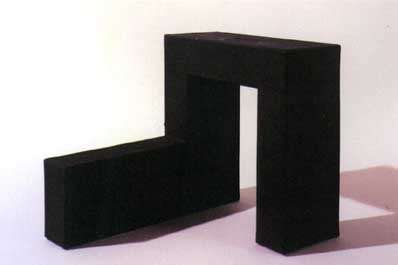Tony Smith
This is the first time a Spanish museum has set up a retrospective exhibition of Tony Smith’s complex work. The oeuvre of this American artist, born in South Orange, New Jersey, in 1912, is the link that has permitted the passage between the avant-garde languages of the early decades of the 20th century and the conceptual proposals that defend the participation of the spectator in the artwork. His career developed over five decades up to the time he died in New York in 1980, from his early steps as an architect in the thirties, when he discovered Frank Lloyd Wright and Le Corbusier’s modular construction, to his most ambitious projects in the sixties, when he attempted to leave his mark on the landscape. A friend and theoretician of the group of artists who founded the New York School, like Mark Rothko, Jackson Pollock, Clyfford Still and Barnett Newman, whom he joined in their pursuit of the sublime without any direct reference to the real world. His constructional ideas and his mastery of geometry have exerted a crucial influence on minimalist artists. However, Tony Smith did not share the reductionist views of these artists but defended the vitality of his own proposals. The real nature of his art resides in his defence of experience as a premise to understand the artistic phenomenon and his opposition to aesthetic conventions. In its apparent simplicity, Tony Smith’s organic geometry has marked a course still followed by a great deal of contemporary sculpture



